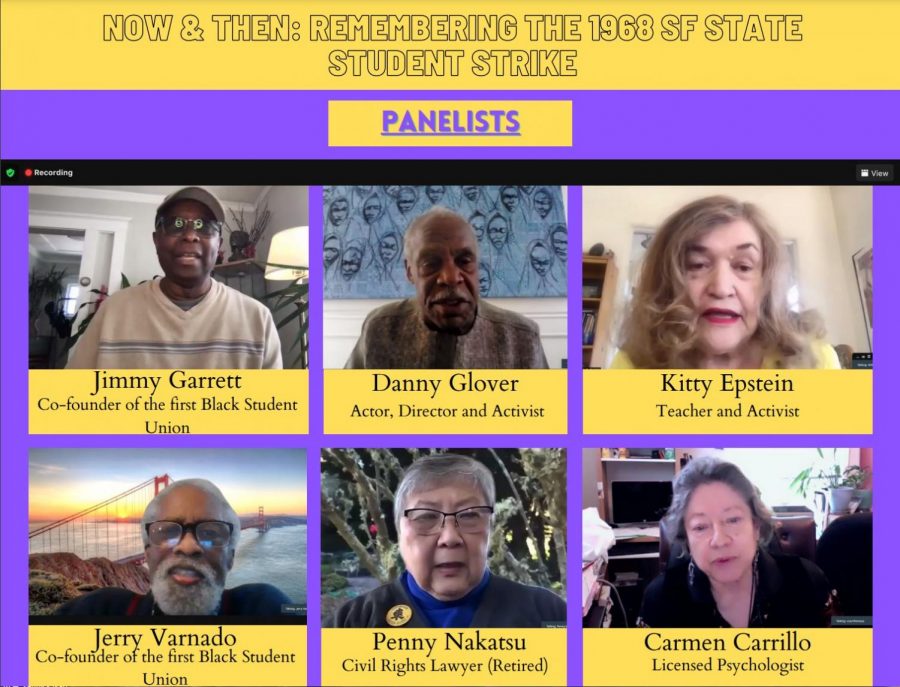

As a result, over the course of the summer and into the fall, those special admits never materialized. The SFSU campus president, liberal John Summerskill, made the promise, but as soon as he made it, he resigned. That sit-in didn’t get the ROTC off campus, but it did get special admissions for students of color. In the spring of ’68, there was also a sit-in organized by SDS and TWLF where the goals were twofold: kicking the ROTC off campus was the big SDS demand, and the TWLF had a set of demands around recruitment and retention of Third World students - not only Black students but also students from the Mission and from Chinatown. Ronald Reagan found this out, they were irate and tried to fire Murray. Needless to say, when the Board of Trustees and then-California Gov. soldier that dies in Vietnam is one less soldier we have to deal with in the streets of Detroit.” He was linking the Black liberation struggle with the struggle of the Vietnamese people. In the summer of ’68, George traveled to Cuba and gave a speech there where he basically said - I’m paraphrasing here - that every U.S. There was also an English instructor, George Murray, one of the Central Committee members of the Black Student Union, who was a longtime student at State and a graduate student by the late 1960s, but he was also Minister of Education for the Black Panther Party. However, the administration was threatening to pull funding for these working programs. Out of these diverse experiences, a unique and revolutionary Black Studies curriculum began to cohere. The BSU students ran this program and were tutoring hundreds of kids in the Mission and Fillmore, teaching them the basics, but also teaching them Black Power. The BSU students had been organizing for years, developing alternative educational experiences, within the Experimental College at first, and later the tutorial programs that connected them to the community. The institution was shut down for four-and-a-half months, the Tactical Squad was out there every day cracking skulls.īut it’s important to understand that the strike was just a culminating moment, when the crisis came to a head. THERE’S SO much focus on the strike itself because it’s so spectacular. WHAT WAS the source of discontent on campus and the conditions that led to the strike?

So SDS viewed students in the Programs as reformist, and those in the Programs looked at SDS as ultra-left and sectarian. Then there was SDS, which was more confrontational - like “F*** the pigs, kick ROTC off campus, kick the Dow Chemical recruiter off campus.” SDS at SF State had principally been taken over by Progressive Labor. The Programs were trying to build student power and community involvement programs, where they were connecting student-organizing efforts like a Tenants Union in public housing in San Francisco, while trying to give students credit to be organizing. There was a lot of tension between these two groups. There were also the white student groups: SDS and the Programs. So the BSU created the TWLF as a way to support that political development. Other groups of color were just forming the Asian-American or Latino movements in the late 1960s, whereas the Black community had gone through this a few years before, due to Malcolm X and the Black Consciousness movement. Plus, they could also see that the other students of color on campus weren’t as politically developed - that their consciousness had not come along as far as the Black Power movement had. Interview: Jason Ferreira 1968: The strike at San Francisco State The BSU created the TWLF partially out of principle and partially because they knew that in the struggle that was going to unfold, they would need alliances. They were all internationalists - not necessarily Marxist, but internationalist. So it’s no coincidence that they called themselves the TWLF - like the National Liberation Front in Vietnam. The TWLF was formed based on the political principle of Third World solidarity, which is animating Cuba, Algeria, Tanzania and Vietnam. In many ways, it was formed by the BSU, but it also includea a student organization (LASO), a Mexican American student organization (MASC), the Filipino organization called PACE and the Intercollegiate Chinese for Social Action (ICSA). The TWLF was a coalition of student organizations of color. There was the BSU, the Third World Liberation Front (TWLF), Students for a Democratic Society (SDS) and the Programs. WHAT STUDENT groups were active on campus? It had everything, so it was a very exciting place to be.

It was an epicenter for a lot of activism, a lot of organizing, a lot of culture, a lot of hippies, a lot of dope, a lot of poetry. The SF State campus itself was a really exciting place. Students on strike at San Francisco State in 1968


 0 kommentar(er)
0 kommentar(er)
